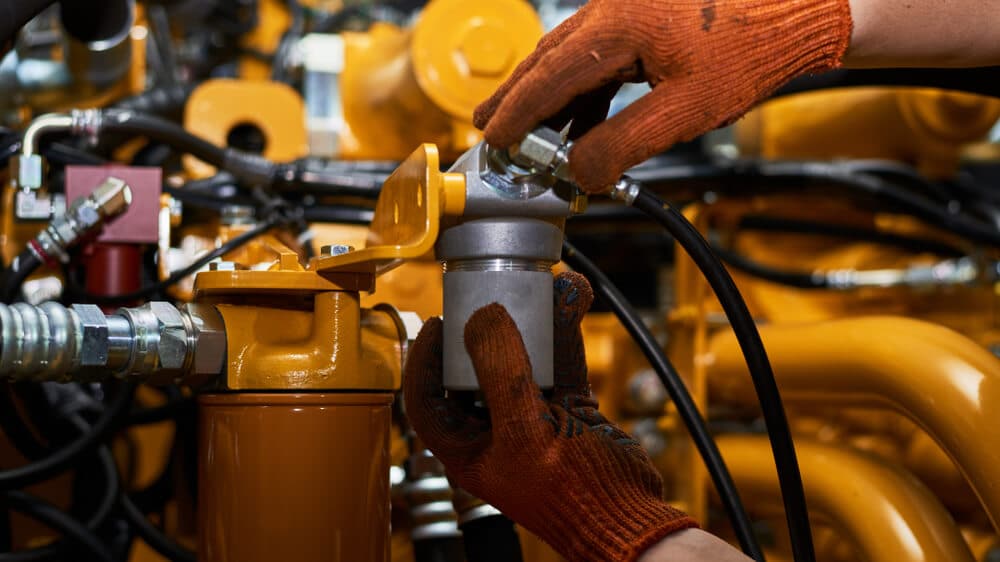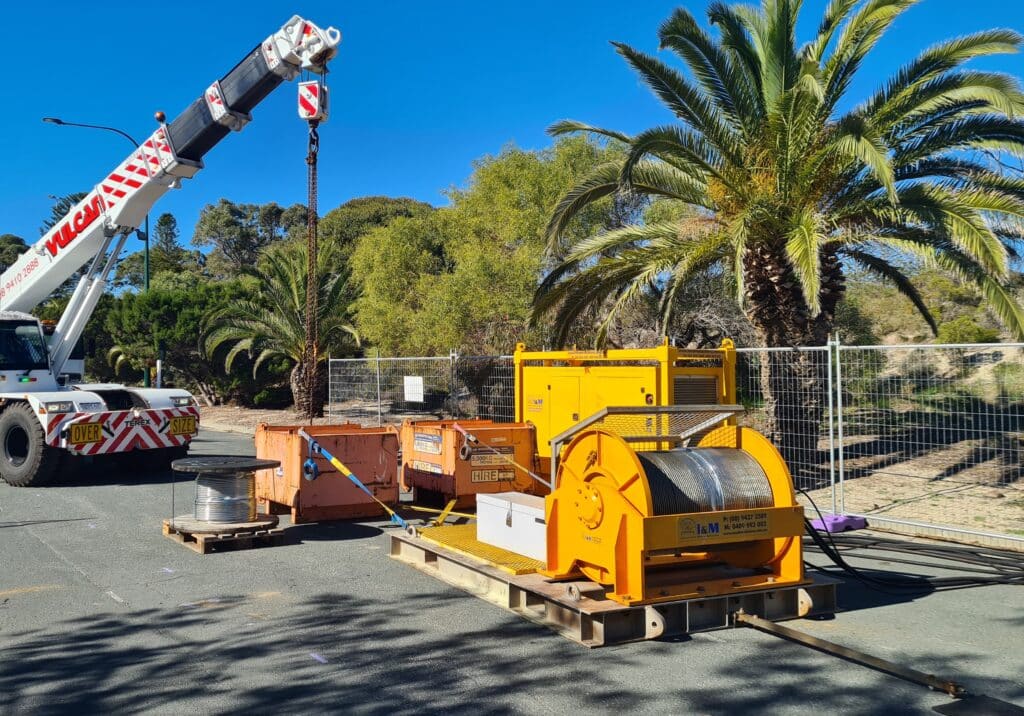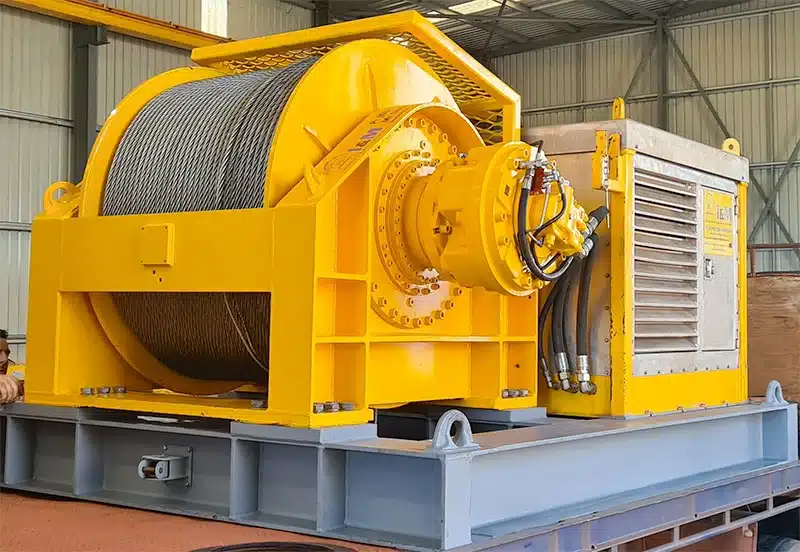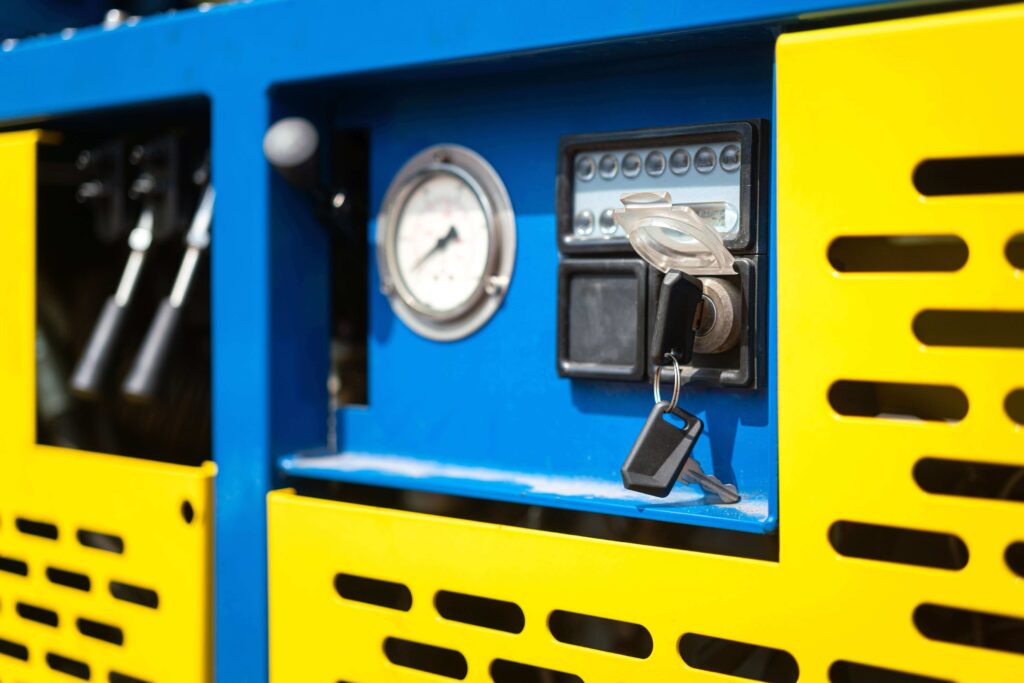In some markets, uncertified hydraulic equipment lurks as a tempting shortcut, driven by cost-cutting measures or gaps in regulatory oversight. While these systems may initially appear more affordable, they’re fraught with performance risks and safety hazards.
Choosing a provider that adheres to ISO-certified equipment standards is critical for avoiding these pitfalls. Let’s explore ISO certification in hydraulic systems and unveil how it drives performance, improves safety, and empowers you to make smarter decisions about your hydraulic equipment.
What is ISO Certification?

ISO certification is a mark of recognition from the International Organisation for Standardisation, confirming that a company’s products, services or processes comply with international standards for quality, safety and efficiency.
At its core, ISO Certification is about setting the bar for excellence. A helpful way to think of ISO is as a universal language of trust – when you see the ISO stamp, you know you’re dealing with something that’s been rigorously evaluated.
Why ISO Certification matters for hydraulic equipment

Hydraulic systems are the backbone of many industries, from construction and manufacturing to oil and gas and maritime. For these systems to perform at their best, they must deliver reliable, consistent results without unexpected breakdowns or failures.
This is where ISO standards play an instrumental role, serving as a blueprint for best practices and ensuring hydraulic equipment meets the highest standards. Let’s take a closer look at some of the key reasons why ISO certification is so important for hydraulic equipment:
1. Ensures reliability and performance
ISO-certified hydraulic equipment is designed, manufactured and tested to rigorous global standards. This means you can trust its reliability and performance, even in the most challenging conditions. Whether it’s a hydraulic pump operating at high pressure or a filtration system maintaining fluid cleanliness, ISO certification guarantees the equipment will function as intended.
2. Provides global recognition and trust
For businesses operating internationally, ISO compliance shows a clear commitment to meeting globally accepted standards. This not only enhances a company’s credibility, but it also streamlines the procurement process for customers and partners, giving them confidence that the certified business has a strong commitment to quality.
3. Enhances safety
Hydraulic systems involve high-pressure fluids that, if mishandled or poorly designed, can pose major safety risks, such as hose bursts, fluid leaks or unexpected system failures.
ISO certifications, such as ISO 4413 for hydraulic system safety, establish protocols to minimise these hazards. These standards cover everything from system design to operator safety, reducing the risk of accidents and ensuring consistent quality.
4. Extends equipment lifespan
Contaminated hydraulic fluids are one of the leading causes of equipment wear and failure. Contaminants such as dirt, metal particles or water can enter the hydraulic system through poorly sealed components or worn-out filters. These particles can scratch internal surfaces or clog valves, reducing the efficiency of pumps and actuators.
ISO 4406, which focuses on fluid cleanliness, ensures that hydraulic systems are built and maintained to control contamination levels. By adhering to these standards, equipment lasts longer, performs better, and requires fewer costly repairs.
5. Supports environmental responsibility
Sustainability is increasingly important in industrial operations. ISO certifications like ISO 14001 for environmental management guide manufacturers and users in reducing their environmental footprint.
When it comes to hydraulic equipment, applying these sustainability principles provide two major benefits. First, they lead to reduced energy consumption through more efficient systems, and second, they generate less waste during production and operation.
This approach not only helps businesses reduce their environmental footprint, but also drives long-term cost savings and contributes to achieving global sustainability objectives.
ISO standards you need to know for hydraulic equipment certification

Here are the key ISO standards for hydraulic equipment and their significance across various hydraulic applications:
- ISO 6020/2 – Compact hydraulic cylinders with 16 MPa Rating: This standard sets the guidelines for the design, performance and size of hydraulic cylinders used in space-tight machines like forklifts, construction and agricultural equipment. Following this standard ensures the cylinders perform reliably under high pressure, keeping hydraulic systems running smoothly.
- ISO 10763 – Fluid power systems and components: Specifies the requirements for fluid power systems, including hydraulic systems and components, to ensure they’re capable of performing safely and efficiently in industrial environments. This standard covers elements such as valves, pumps and actuators that are integral to hydraulic systems.
- ISO 11170 – Hydraulic fluid power filter elements: Outlines the specifications for hydraulic fluid power filter elements used in hydraulic systems. Adhering to this standard improves longevity and performance, protecting machinery and personnel by reducing the risk of hydraulic fluid contamination in industries like mining, manufacturing, and energy.
- ISO 6162 – Flange connections for hydraulic systems: This standard ensures secure, leak-proof connections for high-pressure fluid transfer, critical in industries like offshore oil rigs and heavy machinery. Following it helps prevent leaks and failures, keeping hydraulic systems running at their best.
- ISO 9001 – Quality management systems for hydraulic equipment: ISO 9001 is one of the most widely recognised standards for quality management across various industries. By adhering to ISO 9001, businesses demonstrate their commitment to delivering high-quality hydraulic products that meet the strictest standards for performance and reliability.
Tips for choosing reliable ISO-certified hydraulic equipment

When it comes to hydraulic equipment, ISO certification is your go-to assurance of quality and reliability. But how do you make sure you’re making the right choice? Here are a few practical tips to guide you:
- Verify the certifications: Always double-check the manufacturer’s or supplier’s documentation for proof of ISO compliance. For example, if you’re hiring hydraulic pumps, look for certifications like ISO 9001 for quality or ISO 4413 for safety.
- Assess your application needs: Think about how you’ll be using the equipment. For instance, are you running high-pressure systems? Do you need precise contamination control? Matching the equipment’s specifications, like flow rate or filtration capability, to your operational requirements ensures you’re investing in the right solution.
- Consult the experts: Choosing the right equipment can feel overwhelming, but you don’t have to do it alone. Trusted providers like I&M Solutions can guide you through the selection process, helping you understand the benefits of specific certifications and ensuring your system is built to last.
I&M Solutions’ commitment to ISO standards
At I&M Solutions, quality is a practice that’s woven into everything we do. We’re dedicated to providing top-quality hydraulic equipment and comprehensive support. From expert sourcing to ongoing maintenance, we ensure your systems perform at their best.
Our ISO certifications are a testament to this dedication. Here’s a closer look at the key certifications we adhere to and what they mean for you:
ISO 9001
When you choose I&M Solutions, you’re choosing consistent quality at every step. ISO 9001 certification ensures that our processes – from product design to after-sales service – are effective and deliver exceptional results.
For example, when we build hydraulic pumps or valves, our customers can rest easy knowing that each component has been rigorously tested and meets stringent quality standards.
ISO 4413
In hydraulic systems dealing with high-pressure fluids, safety is non-negotiable. ISO 4413 focuses on creating hydraulic systems that minimise risks. For example, our hydraulic designs include features like robust seals and fail-safe mechanisms to enhance reliability and safety. With this certification, we ensure peace of mind for businesses and operators alike.
ISO 4406
Contaminated hydraulic fluid can be a silent killer for machinery, leading to costly wear and unexpected breakdowns. ISO 4406 provides a standard for keeping hydraulic fluids clean and controlling contamination at every stage.
For instance, when we service hydraulic systems, we employ advanced filtration technologies and follow strict protocols to meet these cleanliness standards. This attention to detail translates to longer equipment life and better overall performance for your operations.
ISO 14001
Our ISO 14001 certification reflects our commitment to minimising environmental impact through smarter resource management, water reduction and energy efficiency. For example, when designing hydraulic systems, we use materials and manufacturing methods that reduce waste and energy consumption. By choosing I&M Solutions, you’re partnering with a company that prioritises both performance and environmental responsibility.
I&M Solutions: Your trusted partner for ISO-certified hydraulic equipment
Choosing a hydraulic provider who isn’t ISO-certified can put your operations at risk. When it comes to hydraulic systems, using equipment that meets international standards is crucial for optimal performance and safety.
At I&M solutions, we prioritise quality, safety and reliability to provide hydraulic equipment you can depend on. Our ISO-certified equipment ensures peak performance and long-term durability, giving you the confidence to stay ahead of the competition.
Contact us today to discover how our industry-leading solutions can elevate your operations.



